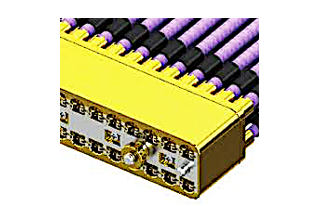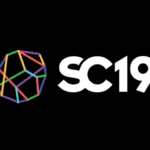IMS Microwave Week Shows the Impact of 5G
IMS Microwave Week, the world’s most important annual RF and microwave event, demonstrated the state-of-the-art products needed to advance 5G and other high-speed technologies. Bishop & Associates’ director of RF technology, David Shaff, shares his impressions of the show.
The IEEE International Microwave Symposium (IMS) Microwave Week is the world’s most important RF and microwave annual event, bringing together state-of-the-art technology and business applications to solve the challenges of tomorrow. Almost 10,000 attendees and more than 600 exhibitors gathered in Boston June 2–7 to share technology advances and market expectations, and some underlying concerns about international trade.
Microwave Week includes IMS plus the Radio Frequency Integrated Circuit Symposium (RFIC), and the Automatic Radio Frequency Techniques Group Conference (ARFTG). ARFTG serves as the foundation for test verification that determines the results of everyone’s work. Industry meetings included the IEEE P-287 Precision Coaxial Connectors Working Group, which defines critical requirements for test connectors.

Over 600 companies exhibited their microwave and RF products at IMS Microwave Week 2019.
Many exhibitors voiced concerns about extended lead-times for higher frequency items. Some products are now out beyond 18 weeks due to material shortages and limited throughput capabilities. Not long ago, some CNC vendors saw competition for machine time between millimeter wave (mmWave) needs and precision weapons production, with the latter prompted by perceived US government restrictions that did not occur. Today’s throughput is affected by steps needed to assure surface smoothness, alloy, and plating options, plus PCB materials and processing, which involves complex international supply chain certifications and traceability.
Subminiature version-A connectors (SMAs) still seem to be the favored threaded subminiature connector. Micro coaxial and microminiature coaxial (MCX and MMCX) connectors were widely exhibited at IMS, along with many supplier-unique, higher density, board-to-board types. Exhibitors of 1mm connectors were abundant, including Frontlynk, PCI (Samtec), Rosenberger, Signal Microwave, SGMC Microwave, Southwest Microwave, Waka Manufacturing, W. L. Gore, and others. Many connector suppliers offered subminiature snap-on connector (SMP) products, but only a few US (and no offshore) exhibitors seemed to be aware that the Defense Logistics Agency and Defense Supply Center Columbus (DLA/DSCC) is on record stating that SMPs per DSCC drawings 94007 and 94008 are not electrically intermateable with those with MIL-STD-348 interfaces, so users should check for catalog misstatements.
IMS Technology Highlights: FCC E-Band to 95GHz, plus THz for 6G Discussions
IMS 2016, the dominant new upper standard for most components was 40GHz. This year, emerging industry discussions focused on 60–70GHz, with debates about the use of 90GHz (E band) versus 110GHz (W band). This is prompted by expected new 5G (NR and backhaul) equipment, SATCOM, and military applications. While 5G means “wireless” to many, the need for wired connectors will increase dramatically as the necessary supporting infrastructure begins to materialize. The first international 5G standards are currently being released along with new test equipment to confirm expected performance. Initial installations and prototyping are underway, but volume production is not expected until 2023 and designs may change as learning curves and technologies advance. Nevertheless, suppliers cannot afford to wait and exhibited designs that meet initial requirements. The international IEEE P-287 Standard Working Group, chaired by Ron Ginley of NIST, met June 5 and continued to work on updating specs, including the addition of 1.35mm (90GHz) and 0.8mm (145GHz) connectors.
With 5G close to implementation, presenters at the “Rump Session” introduced new concepts. Gerhard Schoenthal, COO at Virginia Diodes, took listeners above 95GHz and into the THz range for both experimental and current commercial applications that include satellite and radio astronomy. Other speakers recapped that wavelengths at THz frequencies are non-ionizing and believed to be biologically safe, with potentials for use in communications, medical, and security equipment.
Onsite Demonstrations at the IMS Expo
Test and measurement capabilities for these high frequencies were displayed by Anritsu. Their VectorStar ME7838 Series broadband VNA reportedly offers the widest available single frequency sweep from 70kHz to 110, 125, and 145GHz with mmWave bands to 1.1THz. Model ME7838D operates to 145GHz through a 0.8mm connector test port. IMS
While Copper Mountain Technologies provides VNAs to 20GHz, they offered their extension systems for use up to 110GHz. South Korean connector and cable supplier Withwave exhibited their Automatic Calibration Modules compatible with Keysight’s PNA and ENA series, Rohde & Schwarz’s ZVL, ZVA, and ZVT, and Anritsu’s ShockLine VNAs.
Keysight presented their N5291A PNA mmWave system, specified for 900Hz to 120GHz, with extended typical performance to 125GHz and operational from 500Hz to 130GHz. The unit viewed operating in X-Microwave’s IMS booth showed results to 130GHz. Test port connectors are enhanced 1mm connectors. Suren Singh, Keysight’s lead application development engineer, noted that the cut-off frequency in air for 1mm is about 133GHz and “a 1mm design can work well without modes up to 130GHz if you produce the connectors and equipment properly.” NMD chassis-mounted connectors had the ruggedized, enlarged coupling nuts standard for test port connectors. Singh continued, noting that “while some other solutions may use a different connector, the many years of standardization for the 1mm interface makes it preferred, at this time for traceability, by Keysight.” Key features include foremost thermal stability with typical performance of less than 0.01dB over 24 hours at 25°C up to 125GHz, and highest port power at 125GHz has a typical performance of +6dBm.

NMD Test Port Connectors from MegaPhase have large threaded housings designed to stabilize test port cables when attached to the analyzer.
Equipment suppliers offer cables and accessories as needed for these higher frequencies and many were on display at the IMS expo. MegaPhase presented probe station test cables for 110GHz using 1mm connectors. Junkosha (Tokyo, Japan) showed its new flexible mmWave cabling for 130GHz with enhanced 1mm connectors and 145GHz with 0.8mm connectors. Marki Microwave had broad families of components for up to 65/67GHz. Krytar’s new directional coupler provides 10 to 110GHz performance. evissaP’s eP MAX Bend formable cables permit bending at the connector instead of using 90° plugs. Stan Hardin, VP and GM of Dynawave Inc., touted their capabilities for producing connectors, cable, and cable assemblies that are notably phase stable to 40GHz.
IMS Insights: PCB Construction Affects Connector Performance
At microwave frequencies, connectors are transmission line components. John Coonrod, technical marketing manager with Rogers Corp., presented a paper on Critical Material Properties for 5G PCB Applications Launch., which illustrated how trace finish, material differences, board thickness, and circuit dimensions affect launch results. While many connector companies now consider 40GHz designs “mature,” microwave and mmWave performance requires an understanding of all items in the electrical path, 5G can be divided into two frequency groups: under 6GHz and microwave/mmWave (GHz). The former involves traditional technology, except perhaps for newer hybrid multilayer builds. GHz packaging trends also involve higher density microwave assemblies, where considerations for PCBs involve more than glass weave effects, such as the type of copper itself and surface smoothness, which affect phase loss and insertion loss. IMS
Kelley Nall, marketing manager with SV Microwave, discussed how SV is working with their sister division, Amphenol Printed Circuits, to optimize launch geometries and provide design guidance to customers. Companies with launch connectors in the greater Phoenix area that can take advantage of proximity to board material providers Rogers Corp. and ISOLA USA include Samtec, Southwest Microwave, Corning Gilbert, and Signal Microwave. A new Amphenol facility is also underway. Additional exhibitors presenting launch connectors with compression (i.e., non-solder) terminations included Hirose, Johnson (Bel/Cinch), Frontlynk, Rosenberger, Pasternack, HUBER+SUHNER, GigaLane, Waka Manufacturing, and Withwave. Many of these suppliers also showed their next-generation assemblies with smaller board footprints. IMS
Connector and Accessory Product Highlights
Microwave connectors often use hermetic feed-throughs instead of pins and spacers to launch onto substrates. Applications for V and W connectors primarily use 0.012” and 0.009” diameter pins. These connectors were originally designed in metric and differences in tolerances may affect performance. Anritsu displayed their W1 (110GHz) and 0.8mm (145GHz) with extended precision BeCu launch pins (see figure below) of 0.127mm diameter (i.e., 0.005”). Assembly with most high-volume RF connectors involves auto-installation, while connector installation in lower volume mmWave assemblies usually is manual or fixture-aided. Generally speaking, the higher the frequency, the smaller the diameter of the pin, which makes them more susceptible to bending or even breaking. To compensate, Terry Philips, president of Century Seals, and Bill Rosas, president of Signal Microwave, described their joint development of precision glass-sealed feedthroughs with 0.15mm (0.006”) diameter pins using gold-plated Kovar steel to minimize bending and misalignment when used with suitable field replaceable and launch connectors and hermetic packages.

Source: Copied from Anritsu catalog
1140-00235 Rev. T (dia. note added).
Many exhibitors also promoted multiport connectors. Those offering MIL-DTL-38999 types included SV Microwave (Amphenol), Southwest Microwave, Delta Electronics Manufacturing, Spectrum Elektrotechnik, and Smiths Industries, plus cable houses including Teledyne Storm Microwave, Times Microwave, and Micable Electronic Tech (Fuzhou, China). Although considered a recent development by many firms, Peter von Nordheim, GM/president of Spectrum Elektrotechnik, said he has been supplying MIL multiports since 1984.
Unique keyed connectors were offered by Winchester (TNC), Delta Electronics Manufacturing (2.92 mm), and Southwest Microwave (custom SMKey 3.7 mm). To help prevent mismating, Maury Microwave showed families of color-coded adapters and cables. Advisory information on color coding is being added to the IEEE P-287 specification. IMS
Most manufactures of SMPM and SMP3 connectors also offered ganged single- and multiple-row assemblies for board-to-board and cable-to-board applications. Although the SMPM and SMP3 interfaces now are standardized, nobody was proposing intermateability of ganged arrays between suppliers. Applicable exhibitors included Samtec, Ardent Concepts, Corning Gilbert, Delta Electronics Manufacturing, Johnson (Bel/Cinch), Cristek Interconnects, Micro-Mode Products, Rosenberger, SV Microwave, and Winchester.

Ganged cable-to-board coaxes by Samtec. Their new custom BE70 operates to 70GHz.
With the continued popularity of SMP/GPO type connectors, it was beneficial to see new cal kits for SMP (also SMPM) offered by Micro-Mode Products, plus Rosenberger and Spectrum Elektrotechnik.
VITA 67 assemblies now include higher density modules per VITA 67.3 that provide application-specific configurations with high contact counts, compatible with VITA 65 OpenVPX assemblies. VITA 67 RF modules serve blind-mate daughtercard to backplane connections, using SMPM-based contacts. VITA 67.3 connectors mount side-by-side with other standard VITA modules, including VITA 66 optical connectors. Exhibitors of VITA assemblies included Samtec, SV Microwave (Amphenol), Delta Electronics Manufacturing, HUBER+SUHNER, and Teledyne Storm Products. IMS

VITA 67.3 Modules by SV Microwave
The new 1.35mm E Series connectors for 90GHz applications were exhibited by Rosenberger GmbH and SPINNER and used by Rohde & Schwarz. (Interestingly, SPINNER bypassed IMS and exhibited only at ARFTG.). Several new full product lines were exhibited, including SMT board launch, adapters, test port connectors, cable plugs, and cal kits. SAGE Millimeter also had 1.35mm-to-WG adapters, while Teledyne Storm Microwave offered cable assemblies. (Flann Microwave’s Sam Brokenshire said that they are studying 1.35mm WG adapters, but “have not (yet) seen … solid requests.” Flann currently offers a 1.85mm and 0.8mm connector to WG adapters.) The main feature touted for 1.35mm connectors is that they are similar to 1.85mm and would provide more rugged mating compared to 1mm connectors.
Author’s Note
Due to length constraints, many new and potentially significant products could not be included in this article. I have attended IMS.MTT-S conferences for many years, primarily as an exhibitor, but it was a different experience with a press pass, which enabled me to learn about advanced work that cannot be published yet. Look for more information in future reports by Bishop & Associates.
Like this article? Check out our other New Technology, 5G, and Connector Industry News articles, our Military and Aerospace market page, and our 2019 Article Archive.
- New Circular Connectors Add to Multi-Billion Dollar Market - January 9, 2024
- Counterfeit Components Ground Airlines - December 12, 2023
- Cables, Connectors, Waveguides, and Hybrid Products for up to THz at IMS 2023 - July 11, 2023





